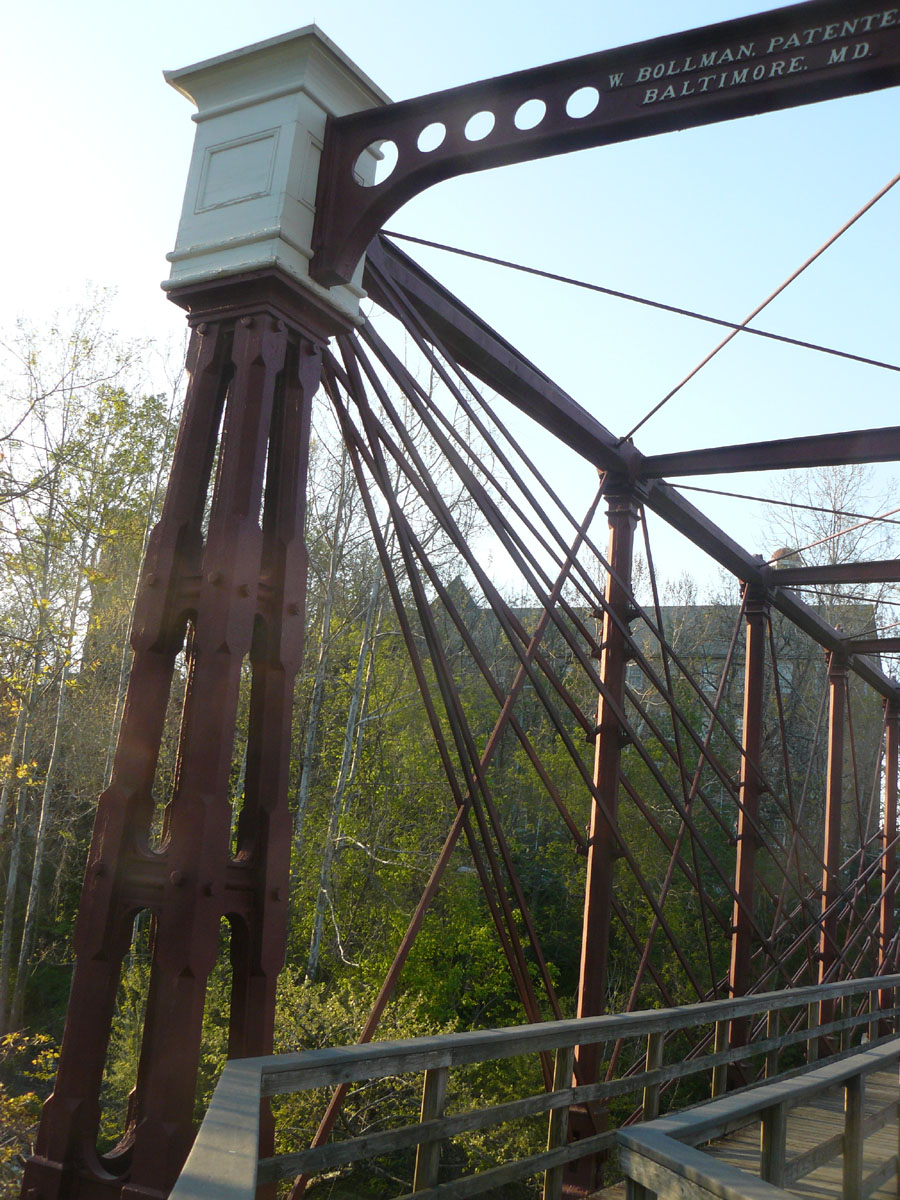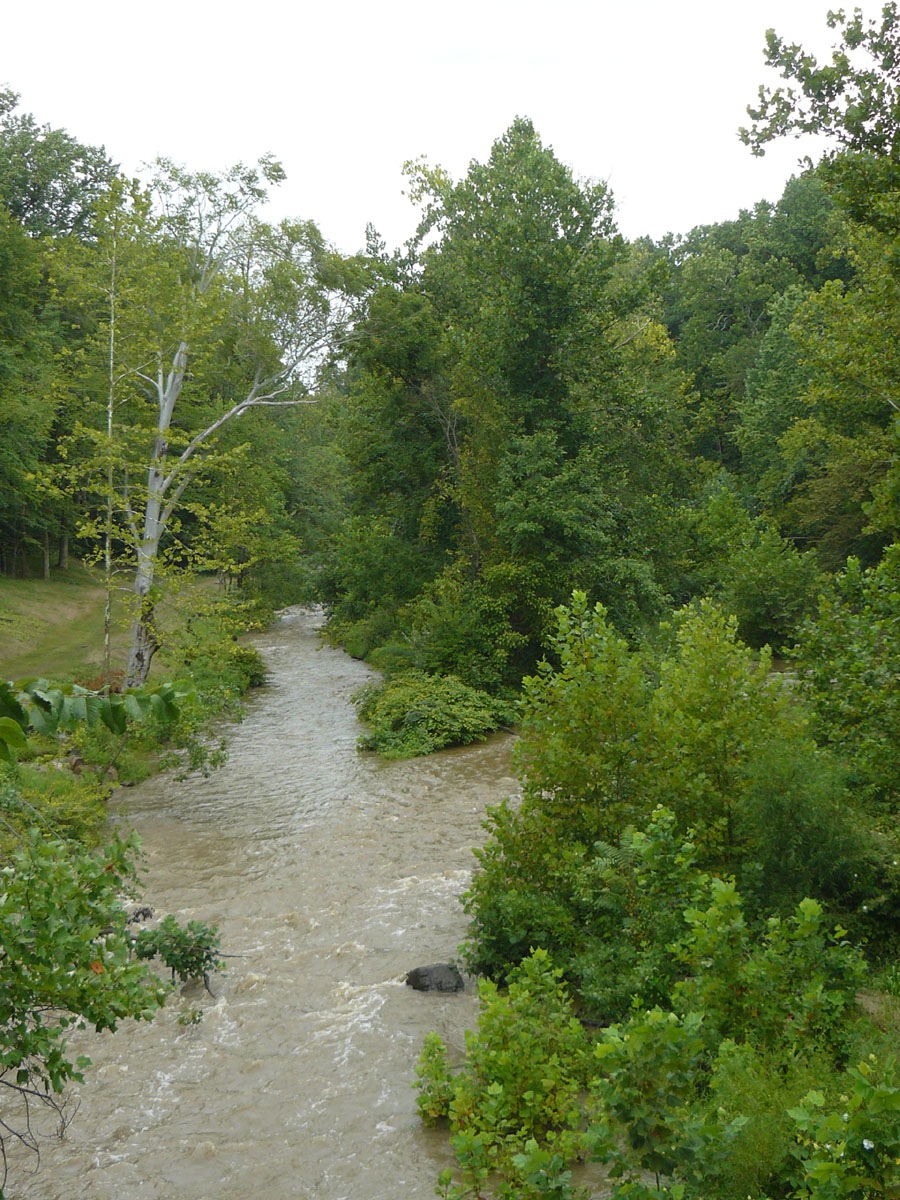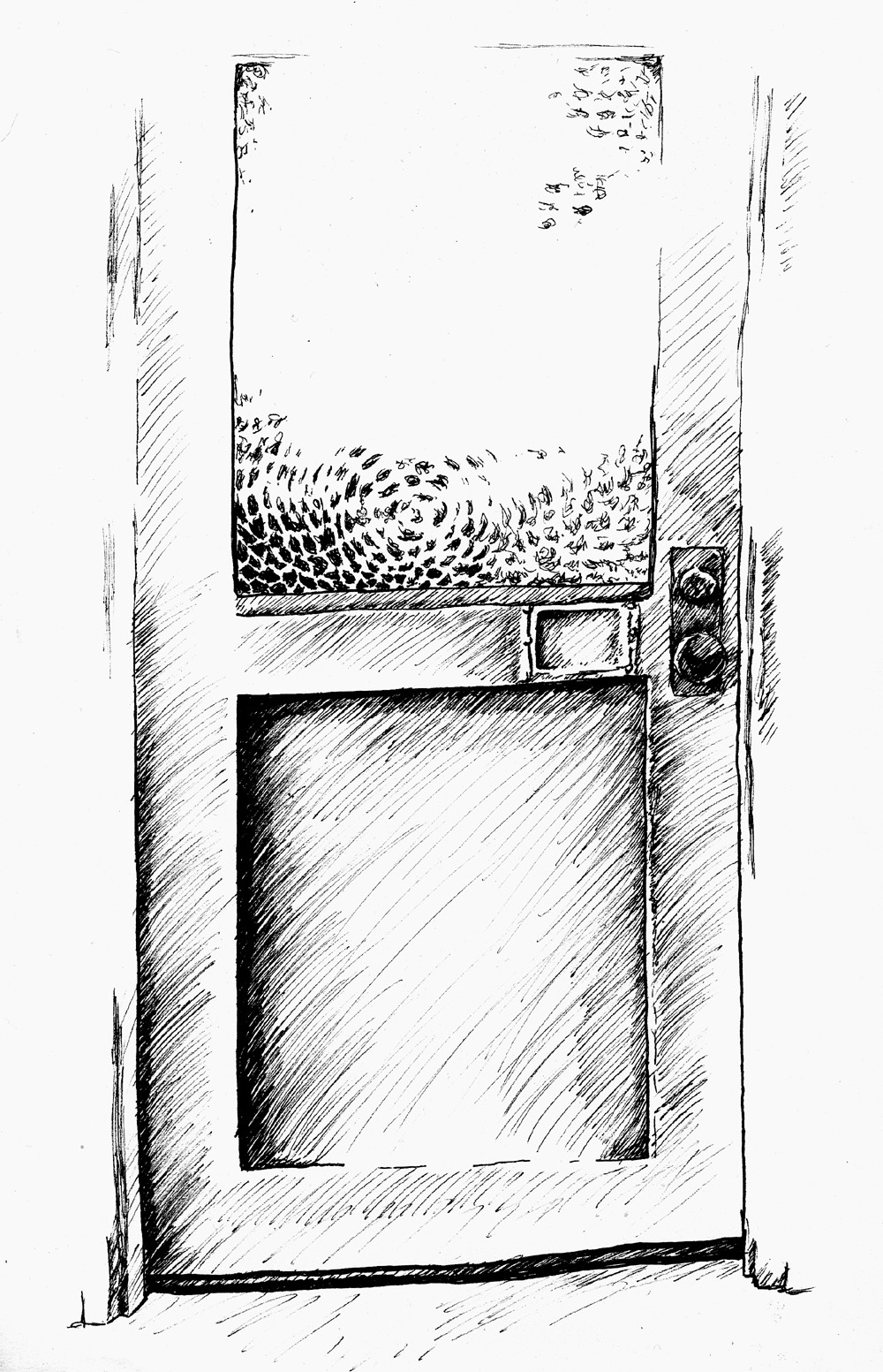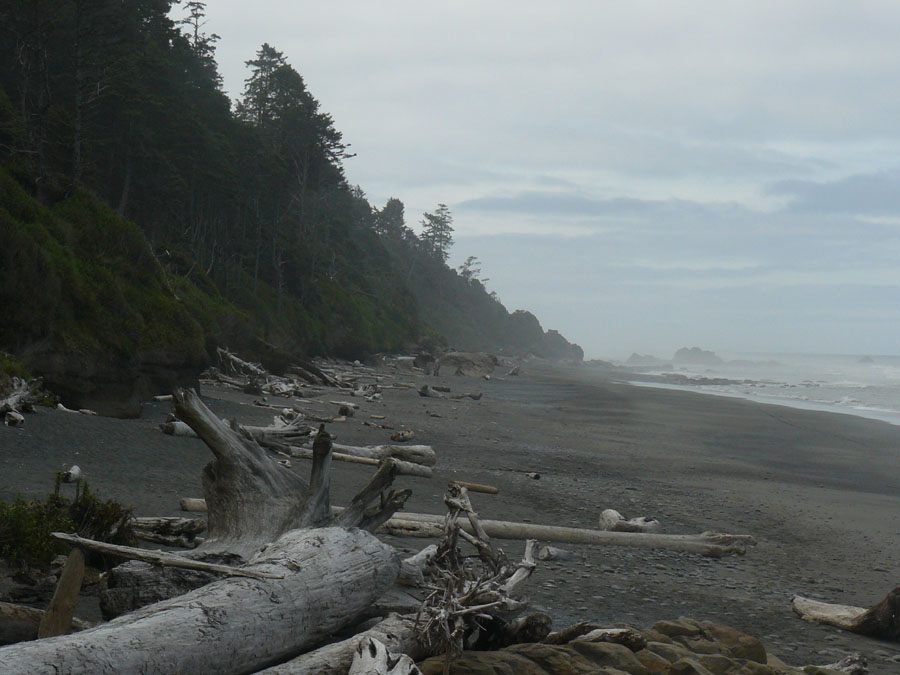 Location Taken: Savage, Maryland
Location Taken: Savage, Maryland
Time Taken: April 2012
Perhaps the most noticeable feature of my hometown is Bollman Bridge. It crosses the local river right near the other potential most noticeable feature, Savage Mill. That’s the building in the background, behind what you should have hopefully realized is the bridge.
This small town was started around the mill. There’s a nice set of waterfalls just upstream from here, which made it a great place to draw power from water. A large stone channel was built, running along the edge of the river down to the flatter ground where they built the mill. Then the water ran through a waterwheel as it fell back down to the river it came from, now twenty feet lower than it had been.
It was a textile mill, and the water powered the great looms. It was successful enough that they expanded it out, and worker housing sprang up around the area. Of course, all this industry meant they needed some way to bring raw materials in and completed goods out, and the best option was train.
Which also meant they needed a bridge over the river for said trains. At first, they just built a standard stone bridge, but after they expanded the mill to make use of this newfangled “steam” technology, they realized the bridge needed replacing. So, instead of building another heavy stone one, or a short-lived wooden one, they stole an iron bridge from somewhere else.
Ok, ok, they didn’t actually steal it. But this bridge was originally constructed elsewhere and moved over to Savage in the 1880’s, nearly 30 years after it was built. This move probably saved it, and certainly saved an important piece of bridge history.
You see, it’s the last of its kind. It’s an example of the first successful iron bridge design, the Bollman Iron Truss. There had been some iron bridges built before, but they kept failing due to flaws in design, and when a bridge fails, people get very wary of that type of bridge. But the stone and wood bridges in common use had a lot of drawbacks, especially in what types of gaps they could cross (for stone) and how long they lasted (for wood). So when Mr. Wendel Bollman was put in charge of the Baltimore & Ohio’s train bridges, he kept looking at iron designs, and eventually invented his own.
It’s full of redundancies, so that any one piece of iron (or even any five) that failed wouldn’t bring down the whole thing. This was exactly what was needed to help bring back confidence in iron bridges. And he built a lot of them, even forming his own bridge-building company.
So why is there only one today, if he built so many? Well, technology moved on. People figured out how to make steel cheaply, and started building bridges out of that material. Steel bridges could support heavier locomotives, and heavier locomotives could haul more freight. So over time, all the iron bridges got replaced, and the iron melted down for other uses.
This bridge, though, had a different fate. It was on a small rail spur, one that ended right at the mill less than a tenth of a mile from the river. Rather than replace the bridge to support heavier locomotives, they just backed the train cars into the loading dock and never bothered actually crossing the bridge with the locomotive. This system worked just fine up to the day the mill closed down in the 1940’s.
Eventually the old mill was converted into its current incarnation, a mixture of antique shops, specialty shops, and artist’s studios. And the bridge was declared a National Civil Engineering Monument and converted into a foot bridge. There’s a second bridge crossing the river right by it for cars, but the red-painted bridge is still going strong. Those redundancies Bollman put in have given it a rather long life, and it will stay around for many more years.
 Location Taken: Garfield Park Conservatory, Chicago, Illinois
Location Taken: Garfield Park Conservatory, Chicago, Illinois



